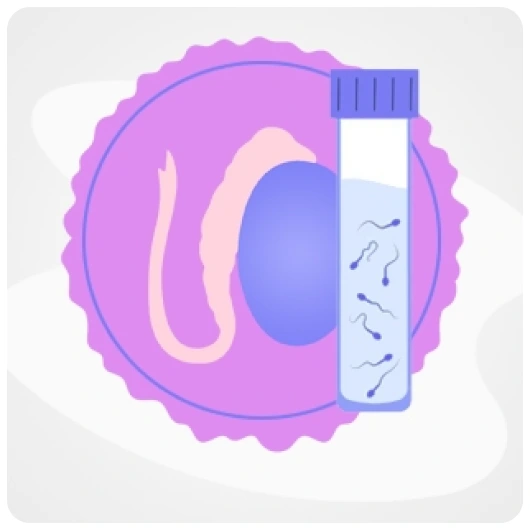Sperm retrieval is a technique used to collect sperm for fertility purposes. The specific method employed depends on the underlying cause of the absence of sperm in semen, the patient's preferences, and the expertise of the surgeon.
Normal Sperm Production and Travel
Sperm and testosterone are produced in the two testicles located at the base of the penis. Sperm travel from the testicles through coiled tubes called the epididymis, where they mature and are stored until ejaculation. Each epididymis connects to the prostate gland through a tube called the vas deferens.
The vas deferens travels from the scrotum to the groin, pelvis, and behind the bladder. There, it joins with a seminal vesicle to form the ejaculatory duct. During ejaculation, sperm travel through the ejaculatory ducts and mix with fluids from the seminal vesicles, prostate, and other glands to form semen. Semen then travels through the urethra and exits the penis.
When is Sperm Retrieval Recommended?
Sperm retrieval is recommended when pregnancy is desired but natural conception is not possible. It is considered for men with:
- Little or no sperm in their semen (azoospermia)
- Inability to ejaculate
In these cases, sperm can be retrieved from other areas of the male reproductive tract and used with assisted reproductive technologies like in vitro fertilization (IVF) and intracytoplasmic sperm injection (ICSI) to achieve pregnancy.

Why Choose Medicover Woman and Child Hospitals

0
+ Expert Doctors
0
+ NICU & PICU Support
0
K+ Normal Delivery
0
+ Beds FacilityIn Vitro Fertilization (IVF)
This process combines an egg and sperm in a laboratory dish for fertilization. The resulting embryo is then transferred to the uterus for development.
Intracytoplasmic Sperm Injection (ICSI)
A single sperm is directly injected into an egg during IVF. A semen analysis is performed to check for sperm presence. If no sperm are found (azoospermia), sperm retrieval might be necessary. There are two main types of azoospermia: obstructive and non-obstructive.
Obstructive Azoospermia
In this condition, sperm are produced in the testicles but blocked from reaching the semen due to obstructions in the male reproductive tract. Common causes include:
- Vasectomy (a surgical procedure for permanent birth control)
- Birth defects (e.g., missing vas deferens)
- Blockages in the epididymis or ejaculatory duct
- Vas deferens damage from surgery (e.g., hernia repair)
Obstructive azoospermia can sometimes be treated with surgery to remove the blockage.
Non-Obstructive Azoospermia
With this condition, the body either doesn't produce sperm at all or produces very low levels that don't appear in semen. Blood hormone tests and genetic tests can help identify the cause.
Lack of Semen with Orgasm
Some men may experience orgasm without semen ejaculation. Ejaculation is the physical release of semen during orgasm, which can involve:
- Orgasm: The physical response to sexual stimulation.
- Ejaculation: The release of semen containing sperm.
- Physical changes like muscle contractions, increased heart rate, breathing rate, blood pressure, and sweating.
Lack of visible semen with orgasm can be caused by:
- Anejaculation: Absence of seminal fluid reaching the urethra.
- Retrograde ejaculation: Semen travels backward into the bladder instead of exiting the penis.
These conditions can be caused by injuries, medical conditions, or surgeries such as:
- Spinal cord injury
- Advanced diabetes
- Multiple sclerosis
- Psychological issues
- Pelvic surgery
A urologist can diagnose these conditions by checking urine for sperm after orgasm. If healthy sperm cannot be retrieved naturally, sperm retrieval may be recommended.
Ready to take control of your health journey?
Book your appointment now and start your path towards wellness today!
Frequently Asked Questions
Is the procedure painful?
Most procedures are performed under local or general anesthesia to minimize pain. Some discomfort or soreness may be experienced during recovery.
What are the success rates of surgical sperm retrieval?
Success rates vary depending on the underlying cause of infertility and the specific technique used. Generally, TESE and MESA have higher success rates in retrieving viable sperm compared to TESA and PESA.
What are the potential risks and complications?
Risks include infection, bleeding, scrotal swelling, and discomfort. There is also a risk of damage to the reproductive tissues, which may affect future fertility.
What should I expect during recovery?
Recovery typically involves rest and avoiding strenuous activities for a few days. Pain and swelling can usually be managed with over-the-counter pain relievers and ice packs.
How long does it take to get results?
The timing varies, but initial results can be available within a few days. Complete analysis and preparation of sperm for assisted reproductive technologies may take longer.
How does surgical sperm retrieval affect future fertility?
If successful, the procedure can allow for biological parenthood through assisted reproductive technologies. However, repeated procedures may be necessary if initial attempts do not result in pregnancy.